Intro
Discover how Nerve Conduction Tests diagnose nerve damage, measuring signal speed and strength, aiding electromyography and neurology diagnostics, to treat conditions like neuropathy and carpal tunnel syndrome.
The human body is a complex system, and understanding how it functions is crucial for maintaining overall health. One of the essential aspects of the body's functioning is the nervous system, which enables communication between different parts of the body. When issues arise with the nervous system, it can be challenging to diagnose and treat them without the right tools. This is where nerve conduction tests come into play. These tests are designed to assess the health and functioning of the nerves, providing valuable insights into the nervous system's performance.
Nerve conduction tests are a type of electrodiagnostic test that measures the speed and strength of electrical signals traveling through nerves. These tests are commonly used to diagnose and monitor conditions such as neuropathy, carpal tunnel syndrome, and peripheral nerve damage. By understanding how nerve conduction tests work and what they can reveal, individuals can better appreciate the importance of these tests in maintaining nerve health. The results of these tests can help healthcare professionals develop effective treatment plans, improving patient outcomes and quality of life.
The nervous system is a intricate network of nerves that transmit and process information. It is responsible for controlling various bodily functions, such as movement, sensation, and cognition. When nerves are damaged or diseased, it can disrupt communication between different parts of the body, leading to a range of symptoms. Nerve conduction tests are a valuable tool for identifying and managing these conditions, enabling healthcare professionals to provide targeted treatments and interventions. By leveraging the insights gained from these tests, individuals can take proactive steps to protect their nerve health and prevent complications.
Nerve Conduction Test Procedure
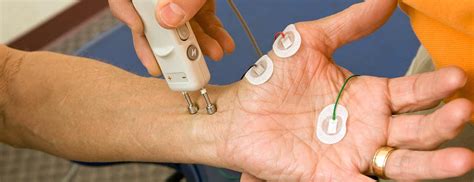
The nerve conduction test procedure typically involves a series of steps. First, the individual is prepared for the test by removing any jewelry or clothing that may interfere with the electrodes. The skin is then cleaned and prepared for the electrodes, which are placed on the skin at specific points along the nerve pathway. The electrodes are used to stimulate the nerve and record the electrical signals that are generated. The test may involve stimulating multiple nerves, and the individual may feel a mild tingling or buzzing sensation during the test.
The nerve conduction test is usually performed in a clinical setting, and the results are interpreted by a healthcare professional. The test is relatively painless, but some individuals may experience minor discomfort or anxiety during the procedure. The results of the test are typically available immediately, and the healthcare professional will discuss the findings with the individual. The test results can help identify nerve damage or disease, and guide treatment decisions.
Types of Nerve Conduction Tests
There are several types of nerve conduction tests, each with its own specific application and purpose. The most common types of nerve conduction tests include: * Sensory nerve conduction tests: These tests measure the speed and strength of electrical signals traveling through sensory nerves, which are responsible for transmitting information about sensations such as touch, temperature, and pain. * Motor nerve conduction tests: These tests measure the speed and strength of electrical signals traveling through motor nerves, which are responsible for controlling muscle movement. * Mixed nerve conduction tests: These tests measure the speed and strength of electrical signals traveling through mixed nerves, which contain both sensory and motor fibers.Benefits of Nerve Conduction Tests
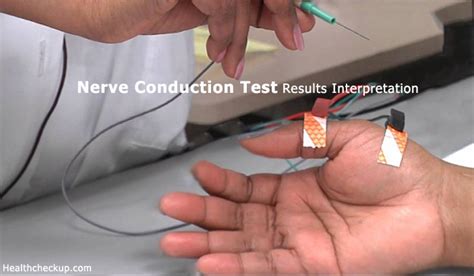
Nerve conduction tests offer several benefits, including:
- Accurate diagnosis: Nerve conduction tests can help healthcare professionals diagnose nerve damage or disease, guiding treatment decisions and improving patient outcomes.
- Monitoring disease progression: Nerve conduction tests can be used to monitor the progression of nerve damage or disease, enabling healthcare professionals to adjust treatment plans as needed.
- Evaluating treatment effectiveness: Nerve conduction tests can be used to evaluate the effectiveness of treatments, such as medications or physical therapy, and make adjustments as needed.
The benefits of nerve conduction tests are numerous, and they play a critical role in maintaining nerve health. By providing valuable insights into the nervous system's performance, these tests can help individuals take proactive steps to protect their nerve health and prevent complications.
Common Conditions Diagnosed with Nerve Conduction Tests
Nerve conduction tests are commonly used to diagnose and monitor a range of conditions, including: * Neuropathy: A condition characterized by damage to the peripheral nerves, which can cause symptoms such as numbness, tingling, and pain. * Carpal tunnel syndrome: A condition characterized by compression of the median nerve in the wrist, which can cause symptoms such as numbness, tingling, and pain in the hand and arm. * Peripheral nerve damage: A condition characterized by damage to the peripheral nerves, which can cause symptoms such as numbness, tingling, and pain.These conditions can have a significant impact on an individual's quality of life, and nerve conduction tests are essential for diagnosing and managing them.
How to Prepare for a Nerve Conduction Test
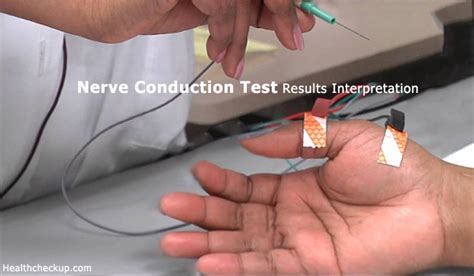
Preparing for a nerve conduction test is relatively straightforward. Individuals should:
- Avoid using lotions or oils on the skin, as these can interfere with the electrodes.
- Remove any jewelry or clothing that may interfere with the electrodes.
- Avoid consuming caffeine or other stimulants, as these can affect the test results.
- Inform the healthcare professional about any medications or supplements being taken, as these can affect the test results.
By following these simple steps, individuals can ensure that they are properly prepared for the test and that the results are accurate.
What to Expect During the Test
During the nerve conduction test, individuals can expect to: * Feel a mild tingling or buzzing sensation during the test, as the electrodes stimulate the nerve. * Experience some discomfort or anxiety during the test, although this is typically mild. * Be asked to remain still and relaxed during the test, as movement can affect the results.The test is relatively painless, and individuals can expect to feel some minor discomfort or anxiety during the procedure.
Interpreting Nerve Conduction Test Results
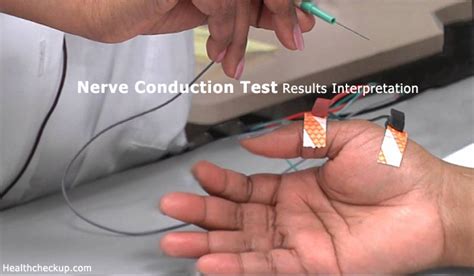
Interpreting nerve conduction test results requires a healthcare professional's expertise. The results are typically presented in a report that includes:
- The speed and strength of electrical signals traveling through the nerve.
- The presence or absence of nerve damage or disease.
- Recommendations for further testing or treatment.
The results of the test can help healthcare professionals diagnose and manage nerve damage or disease, guiding treatment decisions and improving patient outcomes.
Limitations of Nerve Conduction Tests
While nerve conduction tests are a valuable tool for diagnosing and managing nerve damage or disease, they do have some limitations. These include: * The test may not detect all types of nerve damage or disease. * The test may be affected by factors such as age, sex, and body temperature. * The test may not provide a definitive diagnosis, and further testing may be needed.Despite these limitations, nerve conduction tests remain a crucial tool for maintaining nerve health and diagnosing nerve damage or disease.
Nerve Conduction Tests and Other Diagnostic Tools
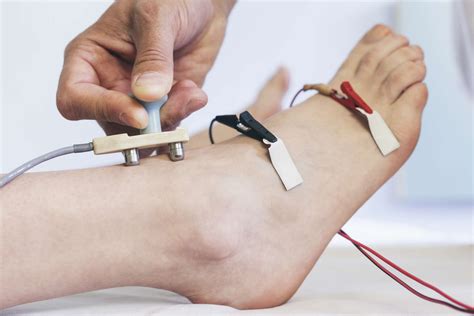
Nerve conduction tests are often used in conjunction with other diagnostic tools, such as:
- Electromyography (EMG): A test that measures the electrical activity of muscles.
- Magnetic resonance imaging (MRI): A test that uses magnetic fields and radio waves to produce detailed images of the body.
- Computed tomography (CT) scans: A test that uses X-rays and computer technology to produce detailed images of the body.
These diagnostic tools can provide a more comprehensive understanding of the nervous system and help healthcare professionals develop effective treatment plans.
Future Developments in Nerve Conduction Tests
The field of nerve conduction tests is constantly evolving, with new technologies and techniques being developed. Some of the future developments in nerve conduction tests include: * The use of advanced computer algorithms to analyze test results. * The development of new electrodes and stimulation techniques. * The use of nerve conduction tests in conjunction with other diagnostic tools, such as artificial intelligence and machine learning.These developments are expected to improve the accuracy and effectiveness of nerve conduction tests, enabling healthcare professionals to provide better care for individuals with nerve damage or disease.
Conclusion and Next Steps

In conclusion, nerve conduction tests are a valuable tool for diagnosing and managing nerve damage or disease. By understanding how these tests work and what they can reveal, individuals can take proactive steps to protect their nerve health and prevent complications. If you are experiencing symptoms of nerve damage or disease, it is essential to consult with a healthcare professional who can provide guidance on the best course of action.
We encourage readers to share their thoughts and experiences with nerve conduction tests in the comments section below. Your feedback and insights can help others better understand the importance of these tests and how they can be used to improve nerve health.
What is a nerve conduction test?
+A nerve conduction test is a diagnostic test that measures the speed and strength of electrical signals traveling through nerves.
What are the benefits of nerve conduction tests?
+The benefits of nerve conduction tests include accurate diagnosis, monitoring disease progression, and evaluating treatment effectiveness.
How do I prepare for a nerve conduction test?
+To prepare for a nerve conduction test, avoid using lotions or oils on the skin, remove any jewelry or clothing that may interfere with the electrodes, and inform the healthcare professional about any medications or supplements being taken.
